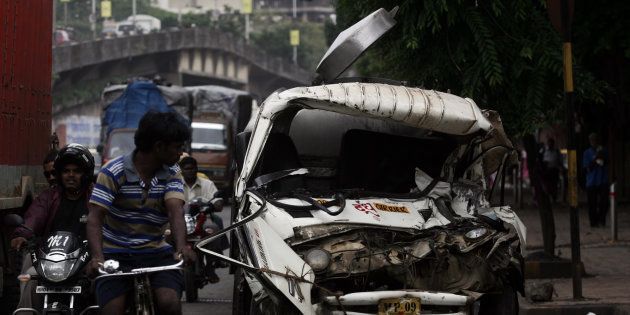
India's official traffic accident statistics were held back for five months because of a small discrepancy between two government departments that could not be resolved.
The official source for crime, accident and suicide data in India is the National Crime Records Bureau (NCRB) which functions under the Ministry of Home Affairs. Every year since 1967, the NCRB has published its annual 'Accidental Deaths and Suicides in India' report towards the middle of the year. The NCRB compiles this from State Crime Record Bureaus, which in turn get these from individual police stations across all districts in their states.
By July 2016, the data from all police stations in the country had come in, and the report on accidents and suicides in 2015 was ready. On July 29, Union Home Secretary Rajiv Mehrishi and NCRB Director General Radhakrishna Kini A wrote their introductory messages to the report. Yet the report was not published, for the first such time officials in the agency can remember. For the next five months, the report remained, completed but unpublished, with the NCRB. On December 30, it was quietly uploaded to the NCRB's website.
The reason? In May 2016, the Transport Research Wing of the Ministry of Road Transport and Highways had released its own report on road accidents in India, and there was a discrepancy of 2,500 deaths between the two reports. According to the Ministry, 1,46,133 people died in road accidents in 2015. According to the NCRB, 1,48,707 people died in road accidents in 2015. The NCRB tried but could not resolve this discrepancy, sources in the agency said. "By last week of December we thought it will look very bad if the data for 2015 is not released in 2016. So we released it anyway," an NCRB official who asked not to be named said.
The ministry reports higher numbers of accidents in most states, while the NCRB reports higher numbers of fatalities than the ministry. Tamil Nadu, Chhattisgarh, Himachal Pradesh are among the only states where figures for the two agencies match. In some states, the discrepancy is large; for Maharashtra, the Ministry reports more than 20,000 more accidents than the NCRB but 450 fewer deaths.
The road ministry's report also got its data from the police and SCRBs, but the format it uses is different from that of the NCRB, an official in the research wing who asked not to be identified, said. "This is not the first time there is a small difference in the numbers; in fact I would say most years it is the case. There was no reason for the NCRB to hold the data back," the official said. A look at the data shows that this is the case; in 2014, the NCRB's data said that 1.42 lakh people had died in road accidents, while the Ministry found that 1.40 lakh people had died.
Moreover, most of the difference can be explained by one variable, HuffPost India found; the Ministry includes deaths at rail crossings under road accidents, while the NCRB classifies it as a separate category. This accounts for 2,087 of the 2,574 "missing" fatalities.
India has the largest number of injuries and deaths from road accidents in the world. It is the top cause of death of young men in India.